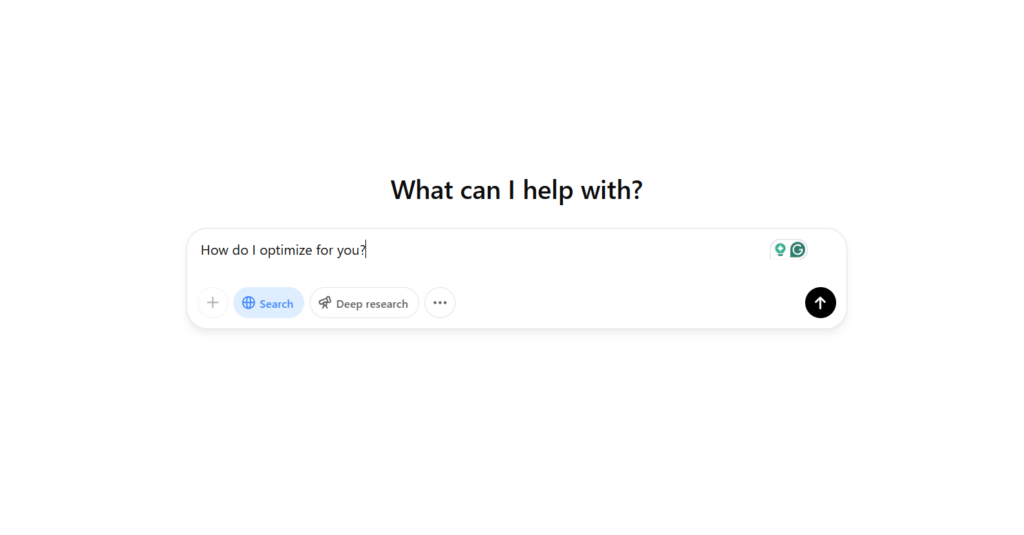Drawing traffic to your site and attracting qualified leads takes a thoughtful e-commerce content strategy, but where—and how—do you begin? Creating meaningful, customer-focused content and delivering it at the right time to the right audience won’t happen by accident. You need a plan that’s repeatable and scalable. Read on to learn basic content strategy steps to get your marketing up to speed.
What Is a Content Strategy?
Simply put, a content strategy is a plan that outlines details for the creation and distribution of lead-generating material to potential and existing customers. This strategy includes information about the target audience and channel, the content format, scheduling, and how these efforts will be measured.

1. Define Company Goals & Benchmarks
The first move in making a content creation strategy is determining what you want to accomplish (goals) and how you’ll measure success (benchmarks). If increasing site traffic and building brand awareness top your list, decide which key performance indicators (KPIs), such as conversions, engagement, and site rankings will track these achievements best.
2. Understand the Target Audience
Your target audience is made of existing customers and potential clients, but how do you figure out who they are, exactly? Because site visitors are turning to your products, services, or articles for solutions, you must understand who the searchers are and what purpose they want you to fill. Use a combination of these approaches to define your target audience:
- Analyze website traffic and social media insights to learn user behavior.
- Tap into customer service for anecdotal feedback and ask sales for data.
- Create buyers’ personas to define your ideal customers.
- Perform keyword research to find out what terms your target audience is searching.
3. Measure the Competition
Evaluating competitors can help you find content gaps and areas to improve to gain market share or capture an untouched audience. Review the competition’s keyword rankings, evaluate the user-friendliness of their website, learn about their products and services, and see ways they engage with customers. Create a SWOT analysis (Strengths, Weaknesses, Opportunities, Threats) to identify where you can capitalize on their deficiencies and distinguish your business with high-performing, customer-focused content.
4. Create a Content Calendar
A content calendar can help organize asset allocation and creation, provide a schedule for social posts, and assist in tracking campaign timing and benchmarks. When the calendar is shared across your team, everyone is aware of timelines and responsibilities. Color-code your calendar for the distribution plan (who is seeing what and where) or to show seasonal versus evergreen content.

5. Use Meaningful Content To Target Channels
Before you blast customers across every channel with robot-drafted copy and reused graphics, ask yourself if this content gets you closer to the goals you’ve set. Consider the buyer’s journey and which fresh, engaging posts will garner second looks and clicks. Remember these tips when developing a content creation strategy across marketing channels:
- Play to the strengths of each channel to leverage short/long and text/image content appropriately.
- Invest time and resources into platform-specific, engaging messages and graphics to best convey your brand.
- Schedule posts and emails for the times users are most active and engaged.
- Engage with your audience to build a community around your brand.
- Pay attention to trends and platform features that will give you an edge.
6. Measure and Track Content Performance
Analytics tell you what’s working and what isn’t so your content strategies can be driven by data rather than guesswork. To do this effectively, you need the proper reporting and measurement tools. Refer to your goals and objectives frequently and gather relevant metrics and insights by:
- Measuring traffic and engagement on every channel
- Running tests to learn about audience behavior (A/B testing, segmentation, etc.)
- Using reports and dashboards to simplify tracking and make results visual
- Assessing conversion rates and bounce rates
7. Fine-Tune & Improve Marketing Methods
Use reporting to see what is resonating with your audience and where your e-commerce content marketing may need tweaking. Experiment with new formats and expand to different distribution channels as you learn more about user behavior. Revisit your strategies often, and remember to keep algorithm updates in mind when shaping future content so your site retains visibility on search engine results pages.
Ready to make a content plan? Contact Eight Oh Two to build a strategy for success today. Whether you’re a new e-commerce company or an experienced brand, our content marketing services can boost your business to hit your goals.





